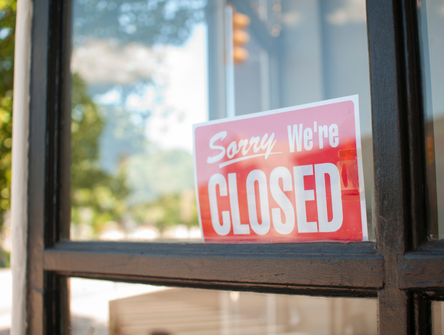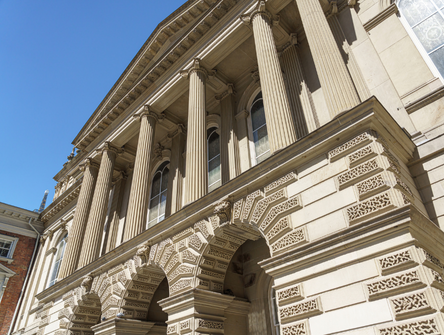Right to strike?
It took little more than two weeks after the Supreme Court of Canada declared the right to strike to be protected under the Constitution before the federal government decided to introduce legislation to force over 3,000 Canadian Pacific Railway workers back to work. No matter that the top court ruled in Saskatchewan Federation of Labour v. Saskatchewan that the right to walk off the job is an intrinsically important part of collective bargaining.

It took little more than two weeks after the Supreme Court of Canada declared the right to strike to be protected under the Constitution before the federal government decided to introduce legislation to force over 3,000 Canadian Pacific Railway workers back to work. No matter that the top court ruled in Saskatchewan Federation of Labour v. Saskatchewan that the right to walk off the job is an intrinsically important part of collective bargaining. Negotiations had broken down between the Teamsters union and CP management, mostly due to an impasse on breaks and time off for conductors. The workers walked off the job on February 15. Trains ground to a halt in Western Canada, and commuters living in the environs of Montreal couldn’t take commuter trains to work. Ottawa moved quickly the next day to legislate an end to the strike.
Before the bill itself was put forward — and, perhaps, because the bill was imminent — the union and management reached a tentative deal to end the work stoppage and take their dispute to mediated arbitration.
Lawyers say the government’s move was a bluff. But in introducing the Rail Service Resumption Act 2015 in the House, Labour Minister Kellie Leitch vowed to “correct the record.”
“We are reviewing the decision taken at the Supreme Court, but it had to deal with the Government of Saskatchewan. It was about essential services, and that is not what we are discussing today. We are discussing making sure that CP Rail continues to function so that Canadians are protected,” she said. “I want to be very clear that the decision dealt with the Province of Saskatchewan, not the Government of Canada.”
Brian Langille, professor at the University of Toronto law school, calls that an “extraordinary legal proposition.”
“No first-year law student would read the law that way,” he says.
Indeed, the majority in Saskatchewan found that the “right to strike is not merely derivative of collective bargaining, it is an indispensable component of that right. Where good faith negotiations break down, the ability to engage in the collective withdrawal of services is a necessary component of the process through which workers can continue to participate meaningfully in the pursuit of their collective workplace goals.”
That’s an about-face from the 1987 Alberta Reference where the court declared that the so-called right to strike was not guaranteed under the Canadian Charter of Rights and Freedoms.
Langille says the importance of the Saskatchewan Fed. of Labour ruling can’t be understated. “It’s not just about public sector workers, or just essential services — though it’s about those too — it’s making a big point about constitutional law,” he says. “It’s about the right to strike and when you can take it away. It applies to the federal government.”
The decision overturned Saskatchewan law that allowed the government to decide what constitutes an essential service and, for those services, to unilaterally limit the right to strike and impose contracts on government workers.
At the heart of the decision is the Court’s repudiation of the broad definition of ‘essential.’
“The fact that a service is provided exclusively through the public sector does not inevitably lead to the conclusion that it is properly considered ‘essential,’” wrote Justice Rosalie Abella for the majority. The Court relied on international case law that has narrowly defined ‘essential service’ to mean one that has a direct impact on the life and safety of citizens.
Also problematic for the courts was the notion that the legislation provided for no alternative dispute resolution mechanisms. That is, if the government ordered workers back on the job, it could simply chose an agreement to impose on them, without any further negotiations or bargaining.
So, as Langille points out, there are two tests governments need to meet before limiting the right to strike — an initial test as to whether or not the service being interrupted is critical to public safety, and a second test over whether, once the limitations on the right to strike are imposed, there is an adequate means to draw up an equitable agreement between management and the union.
Saskatchewan failed on both those fronts.
The federal government, on the other hand, if it ever faces a challenge on its use of back-to-work legislation, may find that it wins on the latter and fails on the former.
Federal back-to-work legislation generally mandates arbitration, which generally satisfies the need for an alternative dispute resolution mechanism. However, Langille says, the simple existence of a mechanism may not be enough, after Saskatchewan Fed. Of Labour.
As University of Toronto law professor David Doorey pointed out when back-to-work legislation was tabled during the Canada Post lockout, “it gives the government (i.e. the Tories) the choice of arbitrators, and imposes Final Offer Selection, which means the arbitrator is limited to selecting either the union proposal or the employer proposal. One party will ‘win’ and one will ‘lose.’”
That sort of leveraged negotiation might not even meet the first test the Supreme Court laid out.
Langille summarizes: “Can the federal government threaten back-to-work legislation after this decision? Yes they can, but they have to justify it and we now have the Supreme Court telling us quite a bit about what the justification would look like.”
He says some federal sector employees such as federally-employed doctors and nurses, or those doing essential military communications could justifiably have their right to strike limited.
For most other workers in the federal sector, Langille says, it’s a no-go.
“They can threaten this sort of legislation, but I think now the threat is largely a bluff,” he says.


